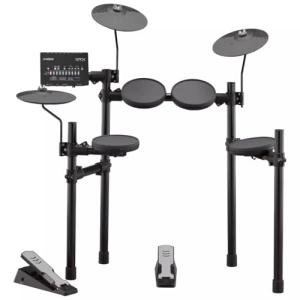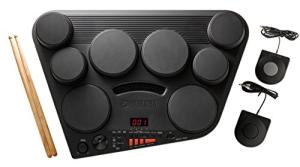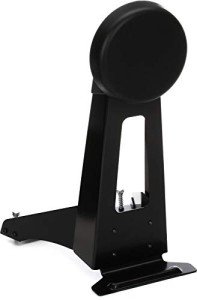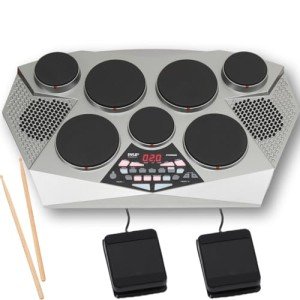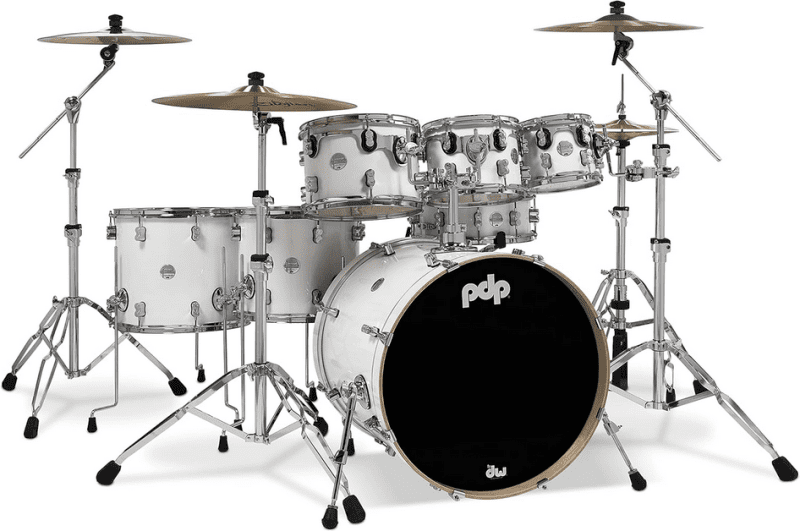Are you ready to unleash your inner rockstar? If you've always been captivated by the thunderous beats and energetic rhythms of drums, then this ultimate guide is your ticket to mastering the art of playing drums. Whether you're a complete beginner or have some experience under your belt, Drumming 101 will take you on a journey from the basics to advanced techniques, helping you become a skilled and confident drummer.
In this comprehensive guide, we'll cover all the essentials you need to know – from choosing the right drum kit and setting it up to understanding different drum strokes and rudiments. We'll dive into the world of drumming styles, explore various musical genres, and discover famous drummers who have shaped the music scene. Along the way, we'll share insider tips, tricks, and exercises to enhance your skills and improve your speed, precision, and coordination.
So, strap on your drumsticks and get ready for an exhilarating ride. Whether you dream of rocking out on stage or simply want to jam with friends, Drumming 101 is here to guide you every step of the way. Let the beat drop and let's get started on your drumming journey.
Benefits of Learning to Play Drums
Playing the drums isn't just about creating thunderous beats and infectious rhythms; it also offers a myriad of benefits for your mental and physical well-being. Drumming is a fantastic way to relieve stress, boost cognitive function, and improve coordination. The physical aspect of drumming provides a great workout for your arms, legs, and core muscles, helping you stay fit while having fun.
Moreover, drumming is a social activity that can connect you with like-minded individuals and create a sense of community. Whether you choose to play in a band, join a drum circle, or simply jam with friends, the collaborative nature of drumming fosters teamwork and communication skills. Additionally, mastering a musical instrument like the drums can boost your self-confidence and sense of accomplishment.
Different Types of Drums and Percussion Instruments
Drums come in various shapes, sizes, and styles, each producing unique sounds that contribute to the overall texture of a musical piece. The drum kit, also known as a drum set, typically consists of a combination of drums, cymbals, and other percussion instruments. Common components of a drum kit include the bass drum, snare drum, toms, hi-hat cymbals, crash cymbals, and ride cymbal.
Apart from the drum kit, there are numerous standalone percussion instruments that add depth and flavor to music. These instruments range from hand drums like the djembe and conga to pitched percussion instruments such as the marimba and xylophone. Exploring the diverse world of drums and percussion can expand your musical horizons and inspire new creative possibilities.
Essential Drumming Techniques
Mastering basic drumming techniques is the foundation upon which you can build your drumming skills. Understanding proper grip, posture, and hand positioning is crucial for developing control and precision while playing. The most common drumming techniques include the single stroke roll, double stroke roll, paradiddle, and flam, each serving a specific purpose in creating dynamic rhythms.
In addition to hand techniques, footwork is essential for coordinating bass drum pedals and hi-hat control. Learning how to use your feet independently from your hands will enable you to play complex patterns and grooves with fluency. Practicing rudiments, which are fundamental sticking patterns, is a great way to hone your drumming skills and improve your overall dexterity.
Drumming Exercises for Beginners
If you're just starting your drumming journey, incorporating targeted exercises into your practice routine can accelerate your progress and build a strong technical foundation. One of the most fundamental exercises for beginners is the single stroke roll, which involves playing alternating strokes with each hand at a consistent tempo. This exercise helps develop hand coordination and control.
Another valuable exercise for beginners is the paradiddle, a four-note sticking pattern that alternates between single and double strokes. Practicing paradiddles can improve your ability to play accents and ghost notes, enhancing the dynamic range of your drumming. Additionally, working on basic drum beats and fills will help you apply your newfound skills in a musical context.
Understanding Rhythm and Timing
Rhythm is the heartbeat of music, providing structure, groove, and momentum to a musical piece. Developing a strong sense of rhythm and timing is essential for drummers, as they serve as the rhythmic backbone of a band. Understanding time signatures, counting beats, and internalizing subdivisions are key concepts that will enhance your rhythmic precision.
Practicing with a metronome is a valuable tool for improving your timing and staying in sync with other musicians. Start by playing simple patterns and gradually increase the tempo as you become more comfortable. Experimenting with different subdivisions, such as triplets and sixteenth notes, will expand your rhythmic vocabulary and add depth to your playing.
Building Drumming Speed and Stamina
As you progress in your drumming journey, developing speed and stamina will become increasingly important, especially when playing intricate patterns or fast tempos. Building speed requires focused practice on specific exercises that target your hand and foot coordination. Start at a comfortable tempo and gradually increase the speed as you gain control.
To enhance your stamina, incorporate endurance-building exercises into your practice routine. Playing consistent patterns for an extended period will help strengthen your muscles and improve your ability to sustain energy throughout a performance. Remember to take breaks and stretch to prevent fatigue and maintain peak performance.
Advanced Drumming Techniques
Once you've mastered the fundamentals, you can explore advanced drumming techniques that will elevate your playing to the next level. Experimenting with polyrhythms, odd time signatures, and metric modulation will challenge your rhythmic abilities and expand your creative palette. Incorporating ghost notes drags, and flams into your grooves will add nuance and depth to your playing.
Furthermore, exploring different styles of drumming, such as jazz, funk, rock, and Latin, will broaden your musical vocabulary and expose you to new rhythmic concepts. Studying the techniques of renowned drummers and incorporating their signature licks into your playing can inspire fresh ideas and push the boundaries of your creativity. Embrace the journey of continuous learning and growth as you strive to master the art of drumming.
Tips for Practicing and Improving Drumming Skills
Consistent practice is the key to mastering any skill, and drumming is no exception. Establishing a regular practice routine that focuses on technique, musicality, and creativity will help you progress steadily. Set specific goals for each practice session, whether it's mastering a new rudiment, learning a challenging groove, or improving your speed.
Recording yourself while practicing can provide valuable feedback on your playing, allowing you to identify areas for improvement and track your progress over time. Seeking guidance from experienced drummers, taking lessons, and attending workshops or drum clinics are great ways to gain insights and refine your skills. Remember to stay patient, persistent, and passionate about your craft.
Conclusion and Resources for Further Learning
Congratulations on embarking on your drumming journey and delving into the exciting world of rhythm and music. By mastering the essential techniques, practicing diligently, and exploring new horizons, you can unlock your full potential as a drummer. Remember that progress takes time and dedication, so stay committed to honing your skills and pushing yourself to new heights.
For those eager to continue their drumming education, there are a plethora of resources available to support your learning. Online tutorials, instructional books, video lessons, and drumming forums offer valuable insights and guidance for drummers of all levels. Additionally, attending live performances, joining local jam sessions, and immersing yourself in the vibrant drumming community can provide inspiration and motivation for your musical journey.
In conclusion, playing the drums is a dynamic and rewarding pursuit that offers endless opportunities for creativity and self-expression. Whether you aspire to perform on stage, record in the studio, or simply jam with friends, the rhythmic world of drumming is yours to explore. So, pick up your drumsticks, embrace the groove, and let the beat guide you on a rhythmic adventure like no other. Let the rhythm of the drums be your heartbeat, and let your passion for music drive you forward. Happy drumming!


